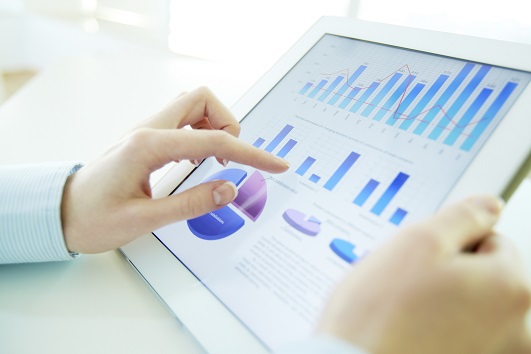Dashboards have become an indispensable tool for every organization. They provide at-a-glance view of your business by gathering information from various parts of your organization. However, it is important to understand how to design business dashboards. If not designed properly, dashboards can misinform and misguide users, instead of helping them.
How to Design Business Dashboards
Here’s how to design business dashboards that transform information into insights and deliver it to your audience.
Keep the user’s needs in mind
Different people in an organization have different information needs. So they expect to see different numbers, metrics & trends on their dashboards. For example, executives are interested in high level trends such as overall monthly growth of your products. On the other hand, a regional sales manager would like to keep track of weekly growth in sales numbers for his region. So executive dashboards need to provide a high level overview of business performance whereas a operational dashboards need to provide more granular details.
One of the key points to remember about “how to design business dashboards” is that business dashboards need to be built with the target audience in mind. Who are they? What are their problems? What kind of information would solve these problems? So it is recommended that you create separate dashboards tailored for each user role. The charts and metrics displayed on your dashboard should be relevant to its audience. It should help them carry out their day-to-day tasks and make decisions on a regular basis.
Design dashboards that simplify information consumption
A well-designed dashboard can help viewers easily consume information, answer questions, discover trends, and share insights with others. It should deliver insights in a clear, concise manner, and engage users to uncover the answers they need.
We generally browse from left-to-right while going from from top to bottom. So, whenever possible, place the most important & urgent information in the upper left hand region and the least important & urgent information in the lower right hand corner.
Another tip is to group related information together. People use dashboards to quickly build an overview in their minds. Grouping related information helps viewers to understand the dashboard as a collection of ideas and focus on the relevant group for more details. It’s important not to group unrelated elements, else it will misguide the viewer to look for relations between them.
Collaborative in nature
When you think about how to design business dashboards, remember that business dashboards are most effective when they can be shared with your team. It promotes collaboration and enables active communication. People can provide feedback such as questions, comments, request for updates. These shared insights can enable data analysis in seconds instead of hours, allowing people to work together and be more productive.
Different types of users use different devices to access business dashboards. For instance, Analysts, Data Scientists and Marketers view dashboards using wide screens whereas Managers & Executives mostly access information using phones and tablets. So they should be easy to share & work across devices.
Hopefully, this leaves you with a few actionable ideas about how to design business dashboards or improve your existing dashboards.
Ubiq makes it easy to create intuitive & actionable dashboards for your Business. Try it out today!
